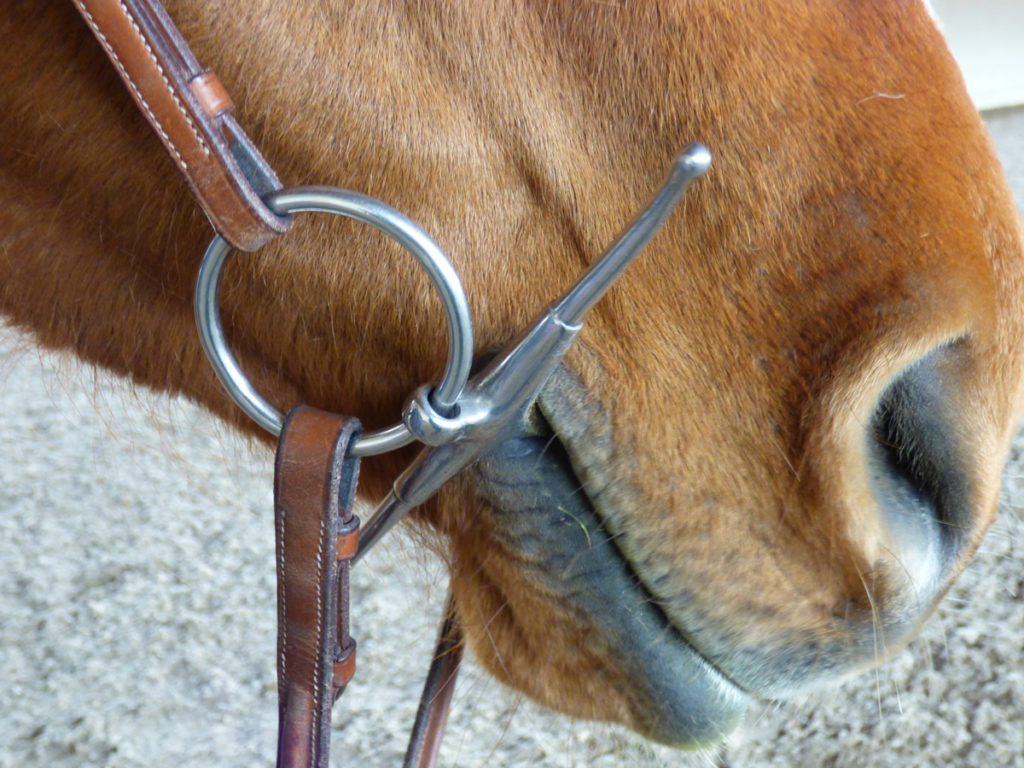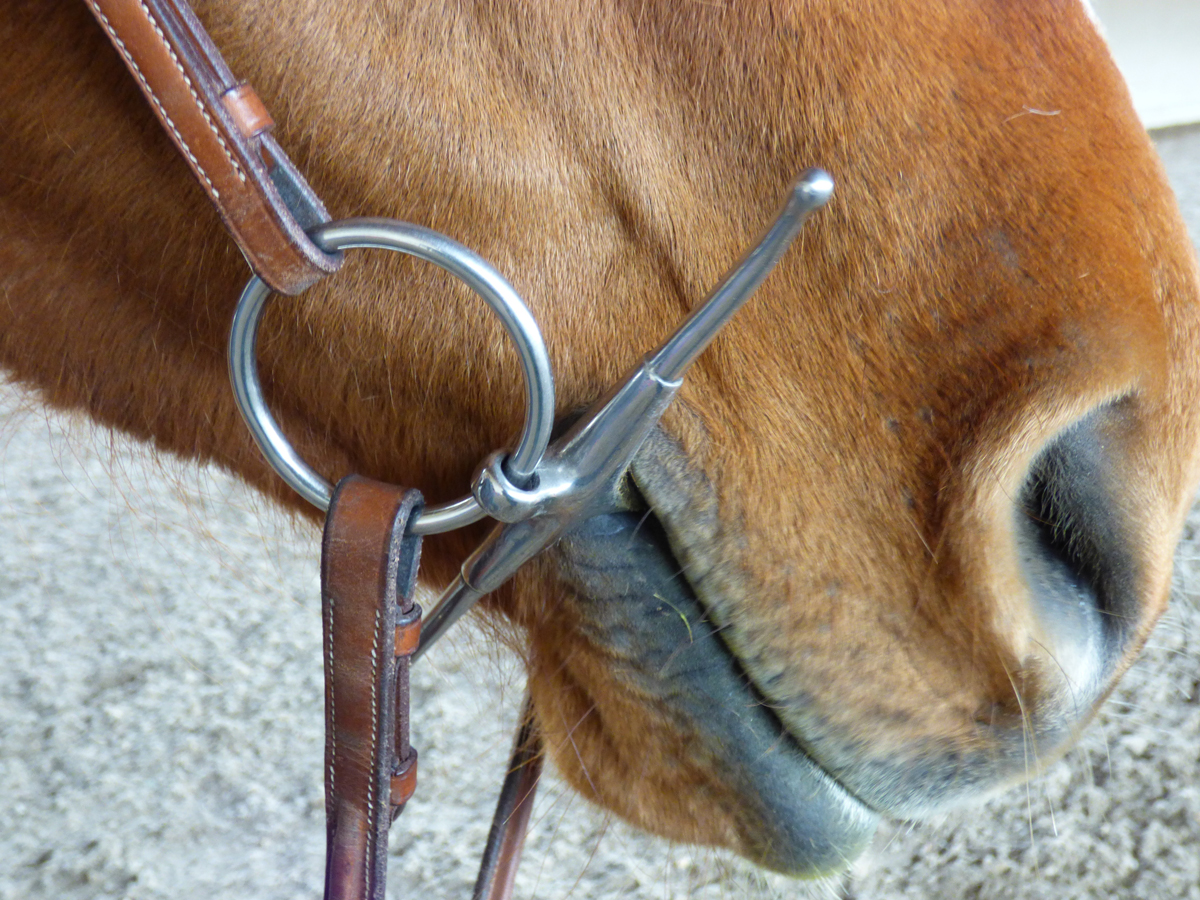Educated Hands and the Action of the Bit
by Shelbie Fredenhagen
The hand is the instrument of all instruments. -Aristotle
Working the horse by applying what is known of physics, and the animal’s musculature system, provides the rider with an osteopathic way of working the horse. In this way your partner will have a longer working life and suffer fewer health problems associated with poor muscle development. Stress can be eliminated by the rider not demanding the horse to perform things that their body cannot physically do. One of the biggest problems I address, and that people seek help for from clinicians and coaches, is how to consistently keep a horse round. Thousands of dollars are spent every year on “magic” bits that promise results and artificial aids created to correct this problem. The answer, however, is not expensive. All you need to start with is a simple single jointed snaffle and educated hands.

Downward action of the hand to the bit forces pressure across the horse’s mouth producing pain through the bars and hypersensitive tongue. Tension will become evident in the horse’s body and mind and shows itself outwardly by resistance against the bit. Symptoms include grinding the teeth, sticking out the tongue, dry mouth, coming above or behind the bit, staleness in the bridle, tongue over the bit… the list goes on. However, if the bit is used by exerting pressure on the corner of the lips, the horse will yield the jaw and swallow. When a horse swallows, and certain muscles are utilized, it is easy to see that the tongue is actually an important crossroad in the process of softening and rounding up. Many riders do not realize what a critical organ the tongue truly is.
Some of the tongue muscles connect to a small set of bones in the throat called the hyoid bones. Originating from the hyoid bones are two major neck muscles, one connecting with the sternum and one with the inside of the shoulder. When the horse’s tongue is compressed due to downward pressure from the bit, these muscles are blocked and cannot function properly. Therefore, discomfort and tension in the tongue will lead to tension all the way down to the bottom of the neck. In addition, there are muscles connecting the hyoid bones to the temporomandibular joint ( TMJ, or jaw,) which is an important center for nerves involved in balance and proprioception (part of the horse’s coordination system).
Unfortunately, for some riders having problems with resistance, it is easier to change the bit, add a flash noseband and blame the horse for having a bad mouth. It would be better to question the efficiency and action of the rider’s own hands. An easy way to improve your hands and, therefore, improve your horse’s carriage, can be accomplished by the following. While riding, simply “check in” with the corners of the horse’s lips to make sure the mouth is relaxed by asking the horse to swallow. This accomplishes several things including less braced muscles through the neck (further releasing tension from their back), greater mobility through the hindquarters and longer strides. There is then a greater opportunity for the horse to have true roundness with soft, elastic movements. This is desirable no matter what discipline you pursue. It is good to remember the words of German equestrian Ludwig Hunersdorf: “The aim of the Art is not only to ride a well conformed animal, but to get the very best out of those that have been less gifted by nature.”
Shelbie Fredenhagen is a classical equitation trainer originally from Anchorage, Alaska. Now based in Alachua, Florida, Shelbie offers lessons, clinics and training opportunities for all levels with a focus on preserving the health of both horse and rider. She frequently returns to the Pacific Northwest to teach. More information can be found at http://www.bodhiequus.com/






